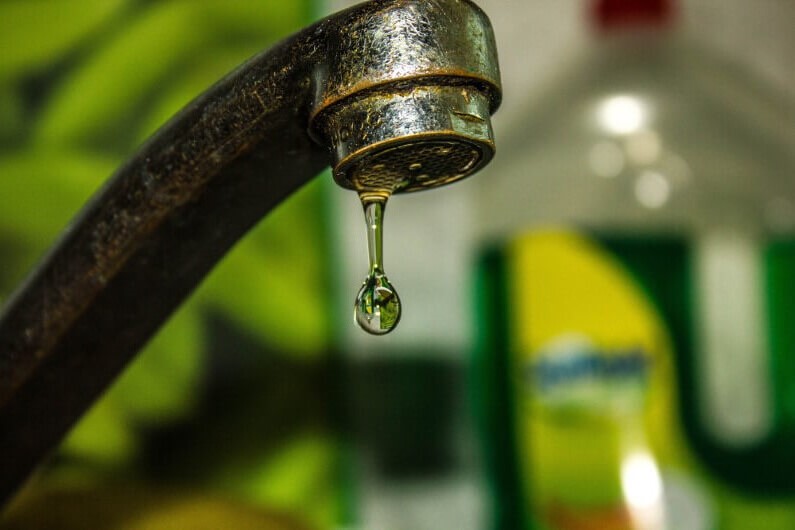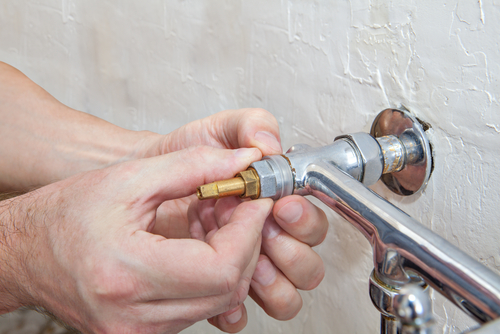Uncovering the Significance of Dealing with a Dripping Faucet
Uncovering the Significance of Dealing with a Dripping Faucet
Blog Article
We've stumbled upon this great article involving How to Fix a Dripping or Leaky Faucet listed below on the web and think it made perfect sense to discuss it with you on this page.

Leaking faucets might look like a minor hassle, however their effect exceeds just the inconvenience of the noise. From wasting water to incurring unneeded monetary costs and health threats, overlooking a trickling tap can result in various effects. In this post, we'll explore why it's essential to resolve this common house problem promptly and properly.
Waste of Water
Ecological Effect
Dripping faucets contribute substantially to water wastefulness. According to the Environmental Protection Agency (EPA), a solitary faucet leaking at one drip per secondly can waste greater than 3,000 gallons of water each year. This not only stress water sources but likewise affects environments and wild animals depending on them.
Financial Costs
Enhanced Water Expenses
Past the ecological impact, dripping faucets can blow up water costs substantially. The accumulated wastage in time translates into higher energy expenditures, which can have been stayed clear of with prompt repair services.
Possible Residential Or Commercial Property Damage
In addition, long term leaking can result in damage to components and surface areas bordering the tap. Water build-up can trigger discoloration, deterioration, and also architectural problems if left ignored, resulting in additional fixing expenses.
Health Problems
Mold And Mildew and Mildew Development
The continuous visibility of wetness from a trickling faucet develops a suitable environment for mold and mold development. These fungi not just compromise indoor air high quality yet also position wellness threats, particularly for individuals with breathing problems or allergic reactions.
Waterborne Diseases
Stagnant water in dripping faucets can end up being a breeding ground for germs and various other pathogens, enhancing the danger of waterborne diseases. Pollutants such as Legionella germs thrive in stationary water, potentially resulting in significant illnesses when ingested or inhaled.
Do it yourself vs. Expert Repair service
Advantages and disadvantages of DIY Repair Service
While some might attempt to repair a leaking tap themselves, DIY repair services come with their very own collection of challenges. Without proper knowledge and devices, do it yourself efforts can intensify the concern or lead to insufficient fixings, prolonging the issue.
Advantages of Working With an Expert Plumber
Employing a specialist plumber makes sure that the underlying source of the trickling faucet is dealt with efficiently. Plumbing professionals have the proficiency and equipment to diagnose and repair tap concerns successfully, saving time and minimizing the threat of more damages.
Step-by-Step Guide to Repairing a Dripping Faucet
Devices Needed
Before trying to take care of a leaking faucet, gather the essential tools, including a flexible wrench, screwdrivers, replacement components (such as washers or cartridges), and plumber's tape.
Common Tap Issues and Their Solutions
Identify the kind of faucet and the certain issue causing the drip. Typical troubles include damaged washers, corroded shutoff seats, or defective O-rings. Describe manufacturer directions or on-line tutorials for step-by-step assistance on repairs.
Preventive Measures
Normal Upkeep Tips
To prevent dripping faucets, do regular upkeep such as cleansing aerators, inspecting for leaks, and replacing damaged components quickly. Furthermore, consider mounting water-saving tools or updating to much more reliable components.
Relevance of Prompt Services
Addressing dripping taps as quickly as they're observed stops additional water wastage and prospective damage, inevitably conserving both water and money in the future.
Effect On Building Worth
Perception of Well-Maintained Property
Preserving a residential property in good condition, including attending to upkeep concerns like leaking taps, enhances its viewed worth and value amongst possible buyers or tenants.
Impact on Resale Value
Residences with well-maintained plumbing fixtures, consisting of faucets, command greater resale values in the property market. Resolving dripping faucets can contribute to a positive impression during home assessments and negotiations.
Ecological Duty
Private Payment to Preservation
Taking duty for fixing dripping taps straightens with more comprehensive initiatives towards water preservation and environmental sustainability. Every individual's actions collectively make a considerable impact on protecting valuable resources.
Sustainable Living Practices
By focusing on timely repair work and adopting water-saving behaviors, people contribute to lasting living methods that benefit both existing and future generations.
Verdict
Resolving a leaking faucet surpasses mere ease; it's a necessary step towards preserving water, minimizing financial expenses, and safeguarding health and wellness and property. Whether via DIY repair services or professional support, doing something about it to fix dripping faucets is a little yet impactful method to advertise responsible stewardship of resources and add to a healthier, much more lasting future.
Most Common Reasons for a Leaky Faucet and How to Stop the Drip
Whether it’s your kitchen faucet leaking or a bathroom faucet leaking, one leaky faucet can waste anywhere from three to 30 gallons of water every single day. If the constant drip-drip-drip doesn’t get your attention, your water bill will. The good news is that, by following a few simple steps, chances are pretty good you can fix the problem yourself.
Why is it dripping?
Before you start taking things apart, let’s break down some of the most common causes of a leaky faucet.
Bad O-ring.
A cartridge is a valve that controls the flow of water into the faucet spout. On cartridge faucets there’s an O-ring—the little disc attached to the stem screw that holds the faucet handle in place. If it’s loose or worn-out, it can cause your sink handle to leak. Of course, the cartridge itself could be worn out. If that’s the case, make sure you replace it with the exact same kind.
Corroded valve seat.
The valve seat connects the faucet and the spout. If the leak seems to be coming from the spout, it might be because a buildup of water sediment has corroded the valve seat.
Worn-out washers or seals.
A leaky spout could be caused by a bad washer that rests against the valve seat. It’s just a matter of time before friction takes its toll. It could also be the wrong size washer or one that’s been installed incorrectly. Water sediments can also corrode inlet and outlet seals.
Water pressure.
If the faucet only drips now and then, or when you turn the handles a certain way, you should probably check your home’s water pressure.
Loose or broken parts.
The adjusting ring and packing nuts in the stream screw can become loose over time, causing your sink handle to leak. Try tightening or replacing the packing nut. If the leak is coming from the pipes underneath the sink, you probably have a broken pipe or fitting. If that’s the case, you should definitely call a plumber.
Know your faucet.
Faucets come in a variety of types. Each one has its own assembly—and its own possible causes of leaks. Learning about the four most common kinds of faucets will help you know how to take them apart and make any repairs.
How to stop a leaky faucet
Fixing that leaky faucet doesn’t have to take a lot of time, money, or expertise. It’s usually a simple matter of replacing a worn-out washer or gasket, a loose O ring, or another part. Chances are really good you can do this yourself if you follow these simple steps.
Shut off the water.
Before you tackle the faucet, cut off the water supply to the sink. There should be one valve for hot and one for cold. Hand-turn them clockwise with your hands till they close. If there are no valves under the sink, head to the basement and shut off the main water supply to the house. Then turn on the faucet until it empties out the water that’s still in the line and you’re ready to start. It’s a good idea to cover the sink drain with a plug or a rag so you don’t lose any small pieces and parts while you’re working.

As a keen person who reads on Should I Repair or Replace a Leaky Faucet?, I assumed sharing that portion was sensible. Loved our posting? Please share it. Help other people locate it. Thanks for being here. Please pay a visit to our site back soon.
Report this page